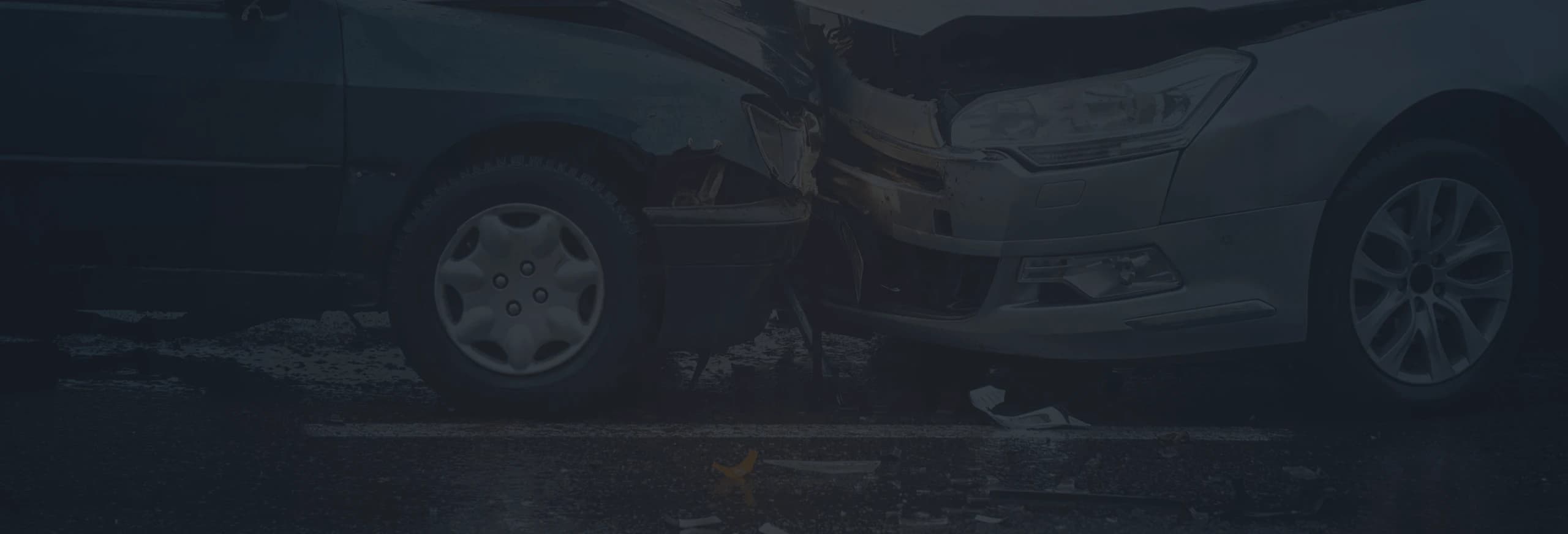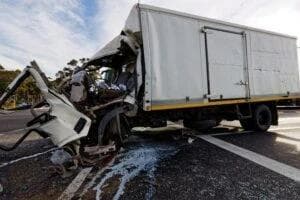
Truck Accident Lawyer in Phoenix

Phoenix drivers share the road with thousands of eighteen‑wheelers every single day. Most rigs roll through town without incident, carrying produce from Yuma or consumer goods bound for New Mexico. Yet when a 40‑ton tractor‑trailer collides with a passenger car on I‑10 or sideswipes a pickup on the 202 Loop, the fallout can be devastating. Crushed metal, spinal injuries, and weeks in physical therapy often follow. If you’re now juggling hospital bills, missed paychecks, and calls from multiple insurance adjusters, you may be wondering how you’ll get your life back on track.
A Phoenix truck accident lawyer can step in at this stressful moment. By tracing the root cause of the wreck, preserving vital evidence, and pressing trucking insurers for a fair settlement, legal counsel helps level the playing field. The sections below outline common causes of truck crashes in the Valley, what makes these cases unique, and practical steps you can take right away.
Why Big‑Rig Wrecks Are Different
A fully loaded semi can top 80,000 pounds—20 times heavier than the average SUV. That size difference changes everything:
- Longer stopping distances. A rig barreling down the Agua Fria Freeway needs far more asphalt to halt than any passenger car.
- Multiple liable parties. Beyond the driver, think about the trucking company, the maintenance contractor, the cargo loader, and even the manufacturer of a failed brake part.
- Complex federal rules. Hours‑of‑service limits, weight restrictions, and electronic logging devices (ELDs) come straight from the Federal Motor Carrier Safety Administration (FMCSA) . Violations can swing a case.
- High‑stakes insurance. Commercial policies often run into the millions. Carriers fight aggressively to guard those funds.
These factors explain why a routine crash lawyer may not be enough. Truck cases demand deep knowledge of safety regs, data downloads, and industry playbooks.
For a free legal consultation with a Personal Injury lawyer serving Phoenix, call (844) 343-9609
Leading Causes of Phoenix Truck Collisions
- Driver Fatigue
Commercial drivers crisscross the desert on tight delivery schedules. Skipping mandated rest breaks can slow reaction time or lead to drifting lanes near the Durango Curve. - Distracted or Impaired Driving
Texting, dispatch tablets, or even over‑the‑counter stimulants can impair judgment. When that happens at 65 mph, the result is rarely a single‑car fender‑bender. - Overweight or Shifted Loads
If freight isn’t balanced or exceeds legal limits, trailers can fishtail during sudden maneuvers. Cargo spills on I‑17 create chain‑reaction pileups in seconds. - Poor Maintenance
Desert heat punishes tires and braking systems. A missed inspection can end in a blowout that scatters debris across multiple lanes. - Rapid Weather Shifts
Monsoon downpours and dust storms slash visibility. A trucker unfamiliar with local microbursts may not slow in time, plowing into slowed traffic.
Phoenix Truck Accident Lawyer Near Me (844) 343-9609
The Evidence Clock Starts Ticking
Key data can vanish within days—sometimes hours—after a collision:
- ELD files might be overwritten on the next trip.
- Trucking companies may repair damage quickly, erasing telltale marks.
- Nearby businesses often auto‑delete security footage after a short cycle.
For that reason, experienced attorneys send preservation letters right away and, if necessary, seek court orders to secure:
- Engine Control Module (ECM) downloads showing speed, brake use, and throttle position seconds before impact.
- Driver logbooks and fuel receipts to verify rest‑break compliance.
- Maintenance records and inspection reports detailing recent repairs—or the lack thereof.
- Dispatch communications revealing deadline pressure that might push a driver past safety margins.
Click to contact our personal injury lawyers today
Calculating the True Cost of a Truck Crash
Medical bills are only the first layer. Victims often face:
- Ongoing rehab for orthopedic or spinal damage.
- Future surgeries such as fusion procedures or joint replacements.
- Lost earning capacity if returning to the same job is impossible.
- Home or vehicle modifications—wheelchair ramps, hand controls, widened doorways.
- Emotional harm including post‑traumatic stress, anxiety, or depression.
A truck accident lawyer works with medical economists and life‑care planners to project these expenses, ensuring negotiations cover not just today’s invoices but tomorrow’s challenges, too.
Complete a Free Case Evaluation form now
First Moves After a Phoenix Truck Collision
- Seek Immediate Medical Care
Adrenaline can hide injuries. A prompt exam documents harm before insurers claim it came from somewhere else. - Gather What You Can
Snap photos of skid marks, debris fields, and road conditions—only if safe to do so. Obtain contact details for witnesses and first responders. - Avoid Lengthy Statements
Insurers may request recorded interviews. Provide basic facts, then explain you’ll follow up after consulting counsel. - Consult Legal Help Quickly
Arizona’s general personal‑injury statute of limitations is two years, but electronic evidence fades much sooner.
Phoenix‑Specific Road Hazards
- High‑volume corridors such as the “Stack” interchange (I‑10/I‑17) bring heavy merging and lane‑changes.
- Construction zones along the South Mountain Freeway shift lanes weekly; confusion breeds sideswipes.
- Extreme heat can pop tire treads, leaving fragments vehicles swerve to avoid—sometimes into your lane.
A lawyer familiar with Valley traffic patterns can show how these local quirks fed into your crash.
Reliable Resources for Deeper Insight
- FMCSA Large Truck Crash Causation Study: statistics on why accidents happen and how to prevent them.
- National Highway Traffic Safety Administration (NHTSA): national data on truck‑related fatalities and safety tips.
- Arizona Department of Transportation (ADOT) Crash Facts: annual reports on statewide collisions and contributing factors.
Reviewing these sources helps illustrate the broader safety landscape when negotiating settlements or explaining claims in court.
People Often Ask
Can I file a claim if I was partly responsible?
Yes. Arizona’s comparative‑fault rules let you recover damages reduced by your share of blame. Even if you’re 20 percent at fault, you may still obtain 80 percent of proven losses.
Do I sue the driver or the trucking company?
Often both. Employers can be liable under “respondeat superior,” and separate claims may target negligent hiring, training, or maintenance practices at the corporate level.
How long do truck cases take to resolve?
It varies. Clear‑cut liability with solid evidence may settle in months. Disputed cases—especially where severe injuries demand seven‑figure compensation—can stretch a year or more, though early legal pressure often speeds talks.
When a commercial truck turns your daily commute into a life‑altering event, you face more than bent metal. The path back involves medical appointments, missed work, and a maze of corporate insurance teams. A Phoenix truck accident lawyer can gather critical records, shoulder negotiations, and push for a settlement that honors both immediate bills and long‑term needs. If you’re ready to shift that weight off your shoulders, a timely legal review is a smart first step.
For a free consultation, call (844) 343-9609
Get an agent on the line in seconds
Responsive
Legal Assistance
Our personal injury attorneys advocate for the funds necessary to cover bills, secure medical treatment, recoup lost wages, and provide compensation for your pain and suffering.
Are you facing unfair treatment from the insurance company?
Do you know the value of your case?
Is the insurance company asserting that the accident is your responsibility?

We'll get back to you ASAP.
Get Your Free Consultation
You Pay Nothing Unless We Recover Compensation For You
